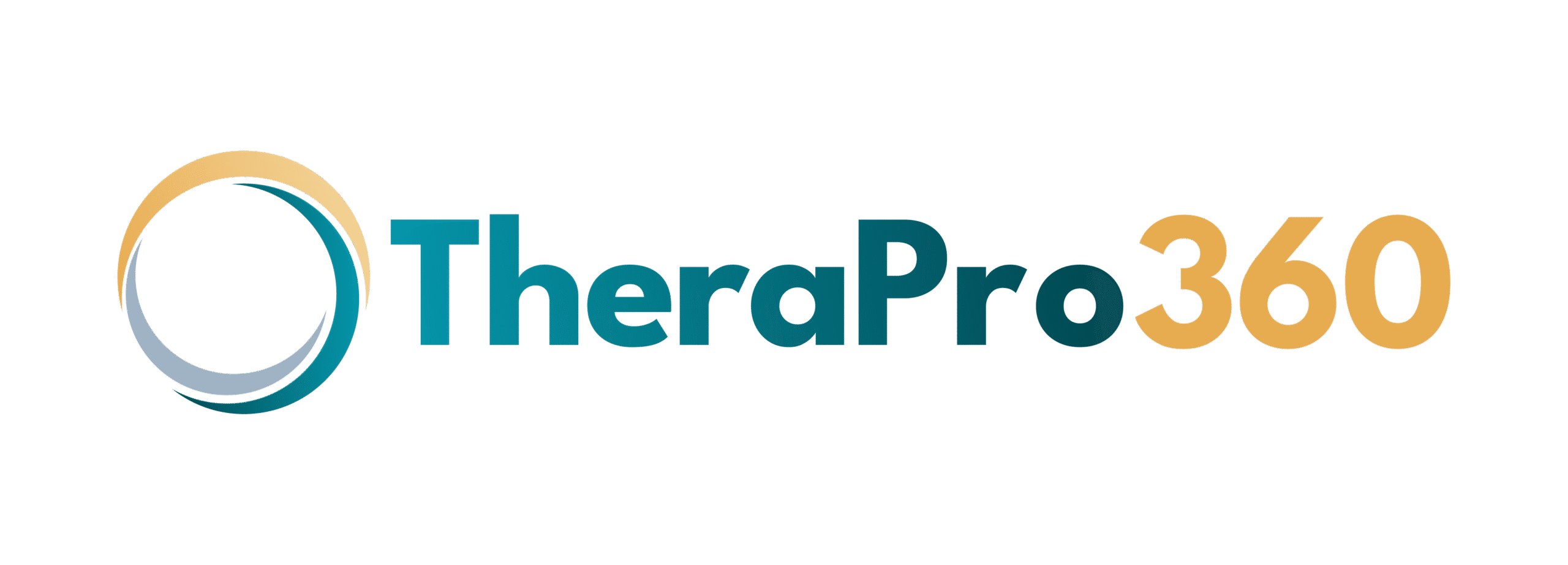
Blog
The Ultimate Guide to Speech Therapy Practice Management Software
Expert web designers ensure the site and software is easy to use.The Ultimate Guide to Speech Therapy Practice Management Software
Introduction — Why Speech Therapy Practices Need Smarter Management Solutions
As a speech-language pathologist, your primary mission is to deliver life-changing care. However, the operational side of running a practice—from scheduling and billing to documentation and compliance—can quickly become a full-time job in itself. This growing administrative burden often stands in the way of your clinical goals, creating stress and limiting your practice’s potential.
The growing complexity of managing modern speech therapy clinics
Managing a speech therapy practice today involves navigating a complex web of tasks. You must coordinate appointments for multiple therapists, handle intricate insurance billing codes, maintain meticulous and compliant patient records, and adapt to new service delivery models like telehealth. As your practice grows, these complexities multiply, making manual systems and disjointed software solutions unsustainable. The administrative workload can easily outpace your capacity, creating operational bottlenecks that stifle growth.
How administrative overload impacts patient care
The time you spend on paperwork is time you can’t spend with patients. Administrative overload directly impacts the quality of care you can provide by reducing your availability for session planning, parent collaboration, and professional development. When therapists are burned out from after-hours documentation and billing headaches, their ability to deliver creative, energetic, and effective therapy suffers. A practice bogged down by inefficiency creates a stressful environment for both staff and patients.
What this guide covers (features, benefits, and how to choose the best software)
This guide is designed to provide a clear path forward. We will demystify the world of practice management software and show you how the right technology can transform your clinic’s operations from the ground up. In this ultimate guide to practice management software for speech therapists, we’ll explore how platforms like the TheraPro360 Practice Management Software simplify scheduling, documentation, billing, and telehealth—helping you focus on what matters most: patient outcomes. We will cover the core features to look for, the tangible benefits of adoption, and a step-by-step framework for choosing and implementing the best solution for your unique needs.
What Is Speech Therapy Practice Management Software?
At its core, speech therapy practice management software is a unified, all-in-one digital platform designed to automate and streamline the administrative and clinical operations of a speech-language pathology practice. It acts as the central nervous system for your clinic, connecting all your essential workflows into a single, cohesive system.
Definition and purpose of practice management systems
The primary purpose of a practice management system is to centralize control and automate repetitive tasks. It replaces the need for multiple, separate tools—like a paper calendar, a spreadsheet for billing, Word documents for notes, and a standalone telehealth app—with one integrated solution. This consolidation saves time, reduces errors, and provides a holistic view of your practice’s health, from financial performance to clinical progress. It’s a tool designed to bring order to the chaos of running a busy therapy practice.
Difference between generic EHRs and speech therapy-specific software
While any medical practice can use a generic Electronic Health Record (EHR) system, these one-size-fits-all solutions often miss the mark for specialized fields like speech therapy. A generic EHR might have billing and scheduling, but it lacks the specific documentation templates, goal-tracking formats, and workflow nuances that SLPs require.
Speech therapy-specific software is purpose-built. It includes templates for SOAP notes and evaluation reports tailored to SLP needs, understands the complexities of therapy billing codes, and offers features designed for tracking progress on communication goals. This specialization makes it a far more efficient and intuitive tool for your daily work.
How it supports both solo practitioners and multi-therapist clinics
The beauty of a scalable practice management system is its ability to adapt to the size of your organization.
- For Solo Practitioners: It acts as a virtual administrative assistant, automating tasks like scheduling reminders and invoice generation. This allows the solo SLP to run a lean, efficient practice without needing to hire administrative staff, maximizing both time and profit.
- For Multi-Therapist Clinics: It becomes an essential collaboration and management hub. It provides a centralized calendar for all therapists, role-based permissions to control data access, unified billing for the entire practice, and standardized documentation to ensure clinical consistency. It gives practice owners the oversight they need to manage a growing team effectively.
The Key Challenges Speech Therapists Face in Practice Management
To appreciate the solution, one must first understand the problem. Speech therapy practices grapple with a unique set of daily challenges that practice management software is designed to solve.
Scheduling conflicts and patient no-shows
Manual scheduling is a minefield. Relying on phone calls, emails, and paper calendars inevitably leads to double-bookings, communication mishaps, and scheduling gridlock. The biggest financial drain, however, is patient no-shows. Without an automated reminder system, practices can lose a significant percentage of their potential revenue to missed appointments, which also disrupts the continuity of care.
Manual billing errors and payment delays
Billing is a high-stakes process where small errors can have big consequences. A misspelled name, an incorrect insurance ID, or the wrong CPT code can lead to a rejected claim. Manually creating superbills and tracking payments in spreadsheets is not only time-consuming but also prone to human error. These errors lead to payment delays, increased administrative work to manage denials, and a direct hit to your practice’s cash flow.
Documentation overload and compliance headaches
SLPs are required to maintain thorough documentation for every session. Writing notes from scratch is incredibly inefficient and can lead to inconsistencies. Furthermore, ensuring that all records are stored securely and meet HIPAA requirements is a major source of stress. The fear of a data breach or an audit revealing non-compliant records is a significant burden for many practice owners. This is why having dedicated SLP documentation software is so crucial.
Limited telehealth integration and poor data access
While many practices now offer telehealth, using a separate, non-integrated video platform creates a clunky workflow. Manually sending links, struggling with technology during sessions, and documenting in a separate system is inefficient. Additionally, when patient data is scattered across different physical and digital locations, it’s nearly impossible to get a clear, immediate view of a patient’s history or the practice’s overall performance.
Core Features of Speech Therapy Practice Management Software
A comprehensive software solution is built on a foundation of core features that address the key challenges of practice management. Here are the nine essential components to look for.
1. Simplified Scheduling and Calendar Management
This feature is your new front desk. It automates the entire scheduling process, from booking to reminders.
Benefits of automated scheduling and reminders
Automated systems send email and SMS reminders to patients, drastically reducing no-show rates. Industry benchmarks suggest this simple feature can cut missed appointments by over 30%. This protects your revenue and ensures a full, productive calendar.
How digital calendars prevent double-bookings
A centralized digital calendar provides a single source of truth for all appointments. When a time slot is booked, it’s instantly reserved across the platform, making it impossible for another therapist or admin to book the same slot. Color-coding and filtered views allow managers to see availability at a glance.
2. Customizable Patient Intake Forms
This feature digitizes your onboarding process, creating a smooth first impression and eliminating manual data entry.
Streamlining onboarding and compliance
Instead of having patients fill out clipboards of paperwork in the waiting room, you can send them a secure link to complete all necessary forms online before their first visit. This includes demographic information, medical history, and consent forms, all signed digitally.
How digital forms improve data accuracy
When a patient or caregiver enters their own information, the risk of transcription errors by your staff plummets. This data then flows automatically into the patient’s EHR, ensuring that names, dates of birth, and insurance details are correct from the start, which is critical for clean claim submissions.
3. Integrated Billing and Payments
This is the financial engine of your practice, automating the revenue cycle from claim creation to payment collection.
Managing insurance claims and invoices efficiently
The software should generate an insurance claim or superbill directly from the completed session note. This ensures that the services documented are the services billed. You can then submit claims electronically in batches, which is far faster than printing and mailing.
Tracking revenue and reducing paperwork
A billing dashboard gives you a real-time view of your practice’s financial health. You can see which claims are paid, pending, or denied, and easily track patient balances. The ability to automatically generate and email patient statements and accept online payments dramatically accelerates cash flow. Given the significant return on investment from improved revenue cycles, exploring options like TheraPro360 pricing becomes a strategic business decision.
4. Comprehensive Documentation and Notes
This is your digital filing cabinet—a secure, organized, and efficient home for all clinical records.
Centralizing therapy notes, goals, and assessments
An integrated EHR for speech therapists keeps every piece of a patient’s clinical history—from the initial evaluation to the final discharge summary—in one secure record. This makes it easy to track progress over time and provides a holistic view of the patient’s journey.
Templates for faster, more consistent reporting
The ability to create custom templates is a game-changer. You can build templates for SOAP notes, treatment plans, and progress reports that include checkboxes, drop-down menus, and pre-written phrases. This can reduce documentation time by 50% or more while ensuring all notes are thorough and consistent.
5. Secure Video Conferencing and Telehealth Tools
This feature allows you to seamlessly integrate remote therapy into your practice.
Conducting remote sessions with HIPAA compliance
A true speech therapy telehealth software solution is built into the platform, not a third-party add-on. This ensures that all video sessions are encrypted and HIPAA-compliant. The system should automatically generate a unique, secure link for each session.
Expanding your practice reach beyond your clinic
Telehealth removes geographical barriers, allowing you to serve clients in remote or underserved areas within your licensed state. It also provides a convenient option for families with transportation challenges or for ensuring continuity of care during minor illnesses or vacations.
6. Patient Portal for Engagement and Access
This is a secure, self-service website that empowers your patients and reduces your administrative workload.
Giving patients control over their appointments and payments
Through a patient portal, clients can view their upcoming appointments, request new ones, pay their bills online, and update their demographic information. This 24/7 access provides convenience for them and saves your staff countless hours on the phone.
Strengthening communication and transparency
A portal provides a secure channel for sharing documents like progress reports or home practice activities. This transparency helps parents and caregivers feel more involved in the therapy process, strengthening the therapeutic alliance.
7. Messaging and Collaboration Tools
This feature streamlines communication both internally and with patients, ensuring it’s both efficient and secure.
Streamlining communication between therapists and clients
A HIPAA-compliant messaging system allows patients to send non-urgent questions about billing or scheduling without resorting to insecure email. All communications are logged in the patient’s chart, creating a clear record.
Using secure messaging for care coordination
For group practices, secure internal messaging allows therapists to collaborate on cases, share resources, and coordinate care without violating patient privacy. This is far more secure than using standard text messages.
8. Administrative Control and Permissions
This critical security feature allows you to control who can see and do what within your system.
Protecting sensitive patient data
Role-based permissions let you enforce the HIPAA “Minimum Necessary” standard. You can create roles (e.g., “Front Desk,” “Therapist,” “Biller”) and grant each role access only to the information required for their job.
Assigning roles to streamline internal workflows
By defining roles, you empower your team to work efficiently without giving them access to sensitive clinical or financial data they don’t need. This protects patient privacy and reduces the risk of internal data breaches.
9. Unified Resource Storage
This feature turns your practice management software into a central library for all your therapy materials.
Keeping educational materials and therapy videos in one place
You can upload and organize all your digital resources—PDF worksheets, instructional videos, visual aids—into a secure, centralized repository. This ends the time-consuming hunt for materials scattered across different drives and binders.
Easy access for both therapists and patients
Therapists can quickly find materials to plan sessions, and with a few clicks, they can share specific resources with patients through the secure patient portal. This is perfect for home practice programs and parent training.
Benefits of Using Practice Management Software for Speech Therapists
Adopting an all-in-one system delivers transformative benefits that ripple across every aspect of your practice.
Saving time and reducing administrative workload
This is the most immediate benefit. By automating scheduling, billing, and documentation, practices report saving anywhere from 5 to 10 hours per therapist each week. This reclaimed time can be reinvested into patient care or professional growth, directly combating burnout.
Comparison chart — manual vs. automated practice management
| Function | Manual Practice | Automated Practice (with PMS) |
| Scheduling | Phone calls, paper calendar, high no-show rate | Online booking, automated reminders, synced calendars |
| Billing | Manual data entry, paper claims, spreadsheet tracking | Auto-generated claims, electronic submission, dashboard tracking |
| Documentation | Handwriting or typing from scratch, physical files | Custom templates, cloud-based EHR, secure access |
| Communication | Phone tag, insecure emails | Secure patient portal messaging, broadcast alerts |
| Reporting | Manual data compilation, guesswork | Real-time dashboards, automated productivity reports |
Improving billing accuracy and cash flow
Automation drastically reduces the human errors that lead to claim denials. By ensuring data flows cleanly from intake to billing, practices can significantly increase their first-pass claim acceptance rate. Combined with faster electronic submission and online patient payments, this can shorten the revenue cycle by weeks, dramatically improving cash flow.
Enhancing patient satisfaction and retention
A smoothly run practice creates a better patient experience. The convenience of online scheduling, digital forms, and portal access shows that you respect your patients’ time. This modern, professional experience builds trust and loyalty, leading to higher patient retention and more word-of-mouth referrals.
Maintaining HIPAA compliance and security
Using a dedicated, HIPAA-compliant therapy software platform is one of the most important steps you can take to protect your practice. It provides the technical safeguards required by law, such as encryption, access controls, and audit logs. This gives you peace of mind, knowing your patients’ sensitive data is protected from breaches and your practice is shielded from potential fines.
How to Choose the Best Speech Therapy Practice Management Software
With many options on the market, selecting the right platform requires careful consideration.
Key questions to ask before selecting a platform
- Is it designed for speech therapy? Does it have the specific templates and workflows an SLP needs?
- Is it truly all-in-one? Does it include scheduling, billing, documentation, and telehealth, or will I need other software?
- What does the training and support look like? Will they help me migrate my data and train my team?
- Is the pricing transparent? Are there hidden fees for support, clearinghouse access, or data storage?
- Is it scalable? Can it grow with my practice from one therapist to ten?
Must-have features for speech therapy practices
Focus on a platform that excels in the core areas. An ideal practice management software for SLPs must offer robust, customizable documentation, integrated electronic claim submission, automated scheduling with reminders, and a built-in HIPAA-compliant telehealth solution.
Checklist: 10 features your next practice management software must have
- Customizable SLP-specific note and report templates.
- Integrated electronic claim submission and status tracking.
- Automated appointment reminders (SMS and email).
- HIPAA-compliant telehealth built into the platform.
- A secure patient portal for scheduling, payments, and forms.
- Role-based security permissions for staff.
- A centralized, cloud-based EHR.
- Financial reporting and analytics dashboards.
- Digital intake and consent forms.
- Secure messaging for patient and staff communication.
Why choosing an SLP-specific solution matters
As mentioned, a generic system will always feel like a workaround. An SLP-specific solution speaks your language. It understands the difference between an articulation assessment and a fluency evaluation. It knows what a SOAP note needs. This specialization saves you countless hours of customization and frustration, allowing you to get up and running faster. For more on this, our articles on simplifying daily workflows and time-saving tips for practice management offer deeper insights.
Comparing generic vs. specialized tools
Generic tools may appear cheaper upfront but often carry hidden costs in lost efficiency and the need for supplementary software. A specialized tool is an investment in a system that is designed to optimize every facet of your unique operation, delivering a far greater return in the long run.
Why TheraPro360 Is the Complete Practice Management Solution for Speech Therapists
TheraPro360 was built to be the all-in-one solution that checks every box for a modern speech therapy practice.
Designed by therapists, for therapists
TheraPro360 wasn’t designed by software engineers in a vacuum; it was developed with direct input from practicing therapists. This means the workflows are intuitive and logical for clinicians. The system is designed to solve the real-world problems that SLPs face every day, from documentation burnout to billing confusion.
Key TheraPro360 features at a glance (Scheduling, Billing, Documentation, Telehealth, Patient Portal)
TheraPro360 brings all the essential speech therapist productivity tools under one roof:
- Scheduling: Online booking, automated reminders, and a drag-and-drop calendar.
- Billing: Auto-generated claims, electronic submission, and integrated patient payments.
- Documentation: A library of customizable templates for every SLP need.
- Telehealth: One-click, secure video sessions launched directly from the calendar.
- Patient Portal: A self-service hub for patients to manage their interactions with your practice.
Case studies or testimonials from real SLPs
Clinics that have switched to TheraPro360 report transformative results. One solo practitioner noted she saved over 8 hours a week on administrative tasks, allowing her to add four more patient slots to her schedule. A multi-therapist clinic owner highlighted how the centralized billing dashboard helped her reduce her accounts receivable by 40% in just three months. Therapists consistently praise the documentation templates, with one stating, “I can now finish my daily notes in 30 minutes, not two hours.”
Integration with DrSensory Therapist Directory for client growth
A unique benefit of TheraPro360 is its integration with the DrSensory Therapist Directory. This partnership helps drive new clients to your practice, providing a built-in marketing advantage that goes beyond simple practice management. It’s a tool that not only helps you manage your practice but also helps you grow it.
How to Implement Speech Therapy Practice Management Software in Your Clinic
Transitioning to a new system can feel daunting, but a structured approach makes it manageable.
Step-by-step guide to getting started
- Choose a Champion: Designate one person in your practice to lead the implementation.
- Schedule a Demo and Training: Work with the software provider to get a thorough walkthrough and schedule dedicated training sessions for your team.
- Data Migration: Plan how you will move existing patient data into the new system. Many providers, including TheraPro360, offer assistance with this process.
- Go Live: Pick a start date. It’s often best to start with new patients first and gradually transition existing ones.
- Review and Refine: After a few weeks, gather feedback from your team and refine your new workflows.
Training staff and migrating existing data
Invest time in training. The more comfortable your team is with the new system, the smoother the transition will be. For data migration, prioritize getting active patient demographics, insurance information, and future appointments into the system first. Past clinical notes can often be uploaded as PDF files to the patient’s new chart.
Tips for maximizing adoption and ROI
Encourage full adoption from day one. Discourage staff from falling back on old, manual methods. Highlight the time-saving benefits for each team member to get their buy-in. Regularly use the reporting features to track your key metrics (like no-show rate and time-to-payment) to see the return on your investment in real time.
Future Trends in Speech Therapy Practice Management
The technology is constantly evolving. Here’s a look at what’s on the horizon.
AI-assisted documentation and reporting
Artificial intelligence will play a larger role in reducing the documentation burden. Expect to see AI tools that can transcribe parts of a session, suggest relevant goals based on assessment data, and even draft narrative summaries for progress reports, leaving the therapist to simply review and approve.
Advanced analytics for therapy outcomes
Future software will offer even more powerful analytics, helping practices connect their operational data to clinical outcomes. You’ll be able to see which therapy approaches lead to the fastest progress for certain diagnoses, providing data to support evidence-based practice on a clinic-wide level.
The continued rise of telepractice and remote care
Telehealth is here to stay. Software will continue to evolve with more interactive features, better integration of digital therapy materials, and hybrid models that seamlessly blend in-person and remote care within a single treatment plan.
FAQ: Common questions about practice management software for speech therapists
- Is my data secure in the cloud? Yes, reputable providers use top-tier, HIPAA-compliant data centers with multiple layers of security and encryption, which is far more secure than a local server or paper files.
- How much does it cost? Pricing models vary, but most are a monthly subscription per therapist. The cost is typically offset by the savings in time and improved revenue.
- Is it hard to learn? Software designed for therapists, like TheraPro360, is built to be intuitive. With proper training, most users are comfortable within a few days.
Conclusion — Empowering Speech Therapists with Smart Practice Management
Your expertise is too valuable to be lost in a sea of paperwork. Smart practice management software is the single most powerful tool you can adopt to reclaim your time, streamline your operations, and refocus your energy on patient care.
Recap of the key benefits of automation and integration
By bringing all your essential functions into one automated, integrated system, you save time, reduce errors, accelerate your cash flow, enhance the patient experience, and fortify your compliance. It’s a comprehensive solution to the biggest administrative challenges that hold practices back.
Encouragement to modernize with an all-in-one solution
Moving away from manual processes is not just about efficiency; it’s about building a more resilient, scalable, and rewarding practice. An all-in-one solution provides the foundation for sustainable growth and a healthier work-life balance for you and your team.
Discover how TheraPro360 can simplify your practice — [Schedule your free demo today].
Why TheraPro360?
Run your practice with simplicity with our streamlined scheduling, seamless telehealth integration, centralized patient portals, intuitive calendar management, and automated invoicing.
Get Started Today















